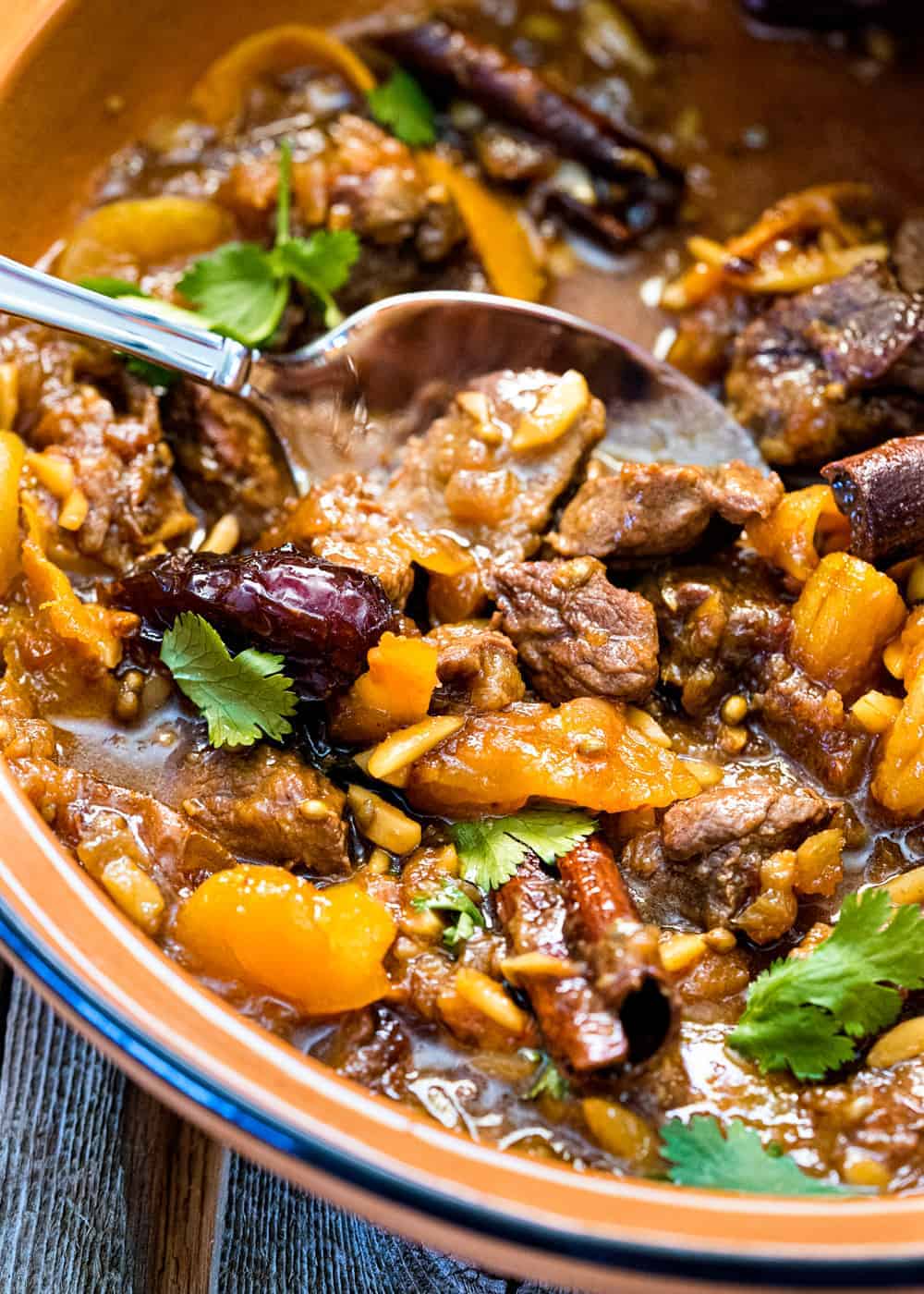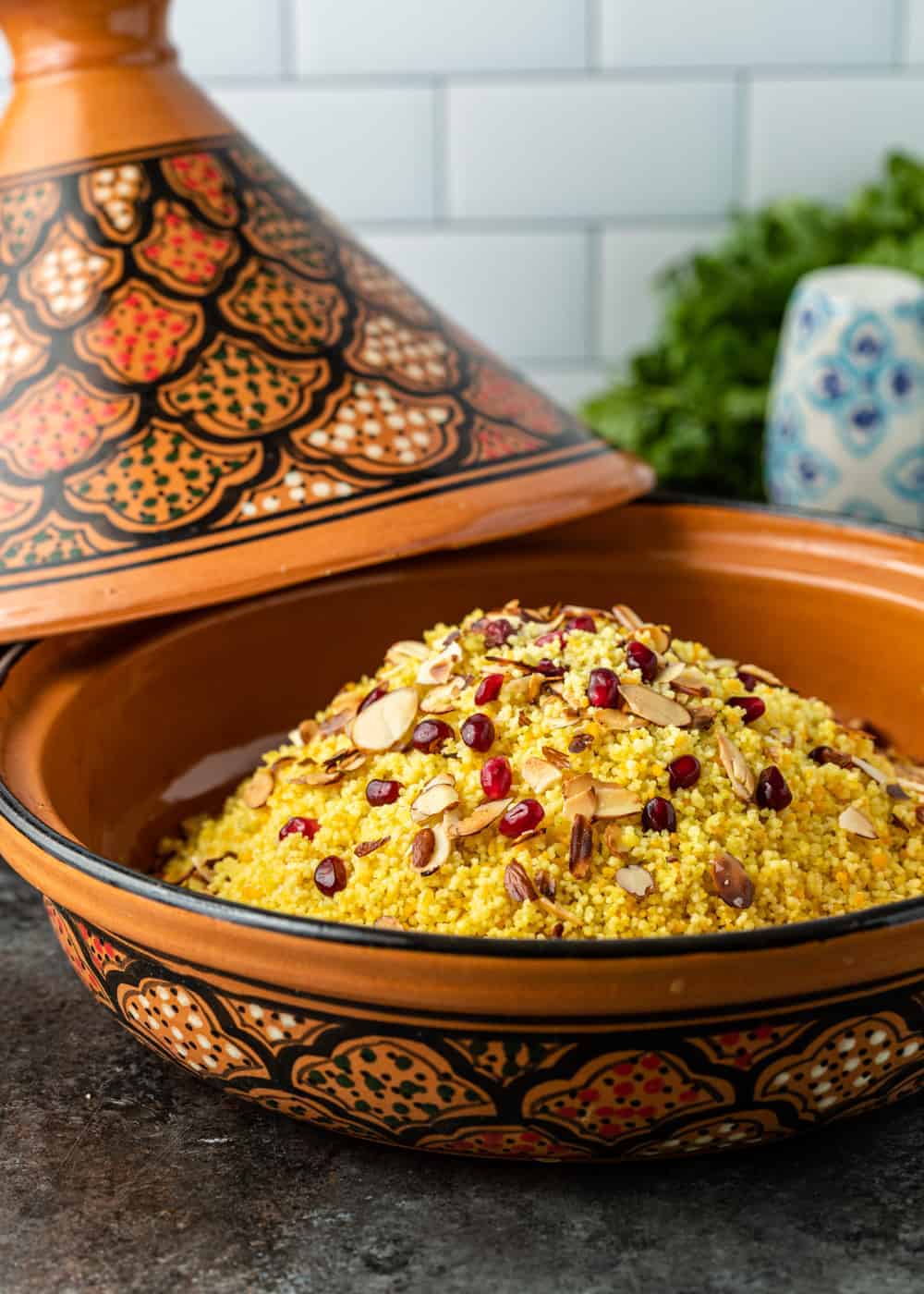published Mar 12, 2023, updated Oct 19, 2023 If you’re an adventurous cook looking to explore new flavors and techniques, a tagine is a fantastic addition to your kitchen. A tagine is not only a cooking vessel but also a traditional North African stew and an entire culinary tradition in itself.
Tagine Basics
What is a Tagine?
A tagine is a traditional North African cooking vessel known for its unique shape, which consists of a shallow, wide base and a conical lid. This design allows for even distribution of heat and the condensation of flavorful steam, making it perfect for slow-cooking and braising.
Material Matters
Tagines come in various materials, each with its own set of characteristics:
Buying Your First Tagine
Size and Capacity
Select a tagine size based on your usual cooking needs. Smaller tagines (around 8 inches) are perfect for serving 2-3 people, while larger ones (around 12 inches) can accommodate 4-6 servings. Choose a size that aligns with your typical meal requirements.
Design and Aesthetics
Tagines come in a variety of designs and colors, often featuring intricate hand-painted patterns. Select one that complements your kitchen decor and personal taste.
Price Range
The cost of tagines can vary widely, with prices ranging from $30 to $150 or more, depending on size, material, and brand. Investing in a high-quality tagine can ensure better longevity and performance.
Seasoning and Curing Your Tagine
Properly seasoning and curing your tagine is crucial, especially if you’re using a clay or ceramic one. This process helps strengthen the tagine and prevent it from cracking during cooking.
Seasoning a Clay or Ceramic Tagine
A Heat Diffuser
A heat diffuser is an essential tool when using a tagine on the stovetop, especially with clay or ceramic tagines, as it helps prevent thermal shock and ensures even and controlled cooking. A heat diffuser is often used when cooking with a tagine on the stovetop for several important reasons:
Caring for Your Tagine
To maintain your tagine, here are some essential care tips: Love this recipe? Share it with the world on Pinterest.
After Each Use: Wash the tagine with mild dish soap and water. Scrub gently if needed, and rinse thoroughly. Avoid using abrasive scouring pads. Avoid Thermal Shock: Never expose your clay or ceramic tagine to rapid temperature changes, such as transferring it from a hot stove to cold water, as this can lead to cracking. Drying: Ensure the tagine is completely dry before storing it to prevent mold growth or damage. Maintaining Seasoning: Over time, the seasoning on clay or ceramic tagines may wear off. To refresh it, repeat the seasoning process.
Is a tagine pot oven safe?
Yes, many tagines are oven-safe, especially those made from cast iron, clay, or ceramic materials. However, it’s important to check the manufacturer’s guidelines and instructions that come with your specific tagine, as oven safety can vary depending on the type and quality of the tagine. Here are some general tips for using a tagine in the oven:
Tagine Basics – Cooking
Now that you have a seasoned tagine, you’re ready to start cooking. Here are some tips for preparing delicious dishes: For great tagine recipes, try my Lamb Tagine with Apricots and Dates, Beef Tagine with Sweet Potatoes Recipe, Cauliflower Carrot Vegetable Tagine and this Chicken Tagine with Chickpeas and Olives!





